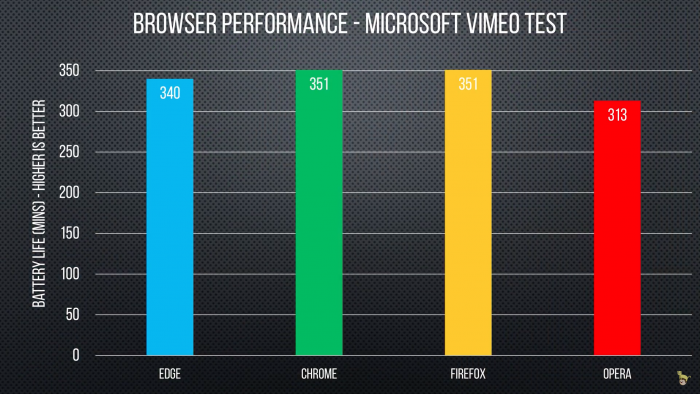Chrome Mac Performance
- Chrome Mac Performance Monitor
- Chrome Mac Performance Tracker
- Chrome Mac Download
- Chrome Mac Performance Settings
- Chrome For Mac Os X
- Chrome For Apple Mac
- Google Chrome Mac
System cleanup in one click
- Dec 14, 2020 This weekend, developer Loren Brichter released a website claiming that Google Chrome for Mac — or more specifically its auto-update mechanism — was causing the WindowServer process on macOS to.
- First of all, the name of the adware might make users believe that it is a legitimate application, as it incorporates “Mac”, “Apple”, and similar terms, such as the ones incorporated into messages below: “MacPerformance” wants access to control “Google Chrome”.

Few computer issues are as annoying as a slow browser experience. And unfortunately no browser has a big “Fix Everything Now” button you can click to magically make it work again.
Google will address long-standing battery life issues, particularly on Mac devices, reports The Wall Street Journal. Chrome will improve 'tab throttling' by better prioritizing active tabs.
Google Chrome’s settings can be particularly frustrating, with features and fixes seemingly hidden in a confusing interface that doesn’t act like a Mac application at all. Luckily, you can use an app like CleanMyMac to do some helpful troubleshooting. CleanMyMac can clear Chrome’s caches, cookies, and site data. It lets you manage your extensions and can even reset the entire application to make Chrome act like new again.
Fix Chrome misbehavior instantly
Force quit apps, boost speed, or fix Chrome freezing — Setapp gives you 180+ apps for solving your browser problems.
But not every problem is quite that dire, so here are a number of tips for identifying and fixing the most common Chrome issues.
How to kill a frozen tab or window in Chrome
If one of your tabs or windows in Chrome just stops responding — so badly that you can’t even close it — don’t worry, it’s an easy fix:
- Go to Window > Task Manager in the menu bar.
- Find the problem window or tab, click to select it, and then End Process.
That will kill whatever process is keeping the tab from loading correctly. The tab will probably show an error message saying, “Something went wrong,” but just click the X on the tab to close it.
If Chrome is just completely frozen, you can force-quit the entire app by pressing Command–Option–Escape, then selecting Chrome in the Force Quit Applications window and clicking Force Quit.
How to disable Flash and check for out-of-date components
You used to be able to disable Adobe Flash Player on Chrome’s plugins page, but it (chrome://plugins) was removed as of version 57. Now you can visit its replacement (chrome://components) to see if any of Chrome’s components, including Adobe Flash Player, are out of date and apply an update. Ideally, all of them should be updated behind the scenes, but you never know.
Adobe Flash Player comes baked into Chrome, so its settings are now on the main settings page (chrome://settings or Chrome > Preferences in your Mac’s menu bar), tucked inside Advanced > Privacy & Security > Content Settings.
The shortcut right to this section is chrome://settings/content. Click Flash and disable the switch next to Ask First to block sites from using Flash entirely. The Block and Allow sections below also let you blacklist or whitelist Flash on a site-by-site basis.
Get rid of Chrome problems
With Setapp, you make the most out of Chrome on Mac. Download the tools that make it happen.
What to do if Chrome is running slow
Chrome Mac Performance Monitor
If Chrome is just moving like molasses and you aren’t sure why, it’s time to do a troubleshooting routine that could isolate the issue. We’ll start with the basics, like clearing caches and cookies, and then work our way up more advanced steps.
1. Clear the cache, cookies, and site data
You’ll have to log into sites again, but this step is often enough to speed things up noticeably. It’s also the easiest fix, which is why we recommend to try it first.
To clear the data via Chrome browser settings:
- Open Chrome > Preferences in the menu bar or just type chrome://settings as the URL. You can also use the Command–comma keyboard shortcut.
- Scroll down to the Advanced section and click Advanced to expand all the options.
- At the bottom of a section labeled Privacy and Security, you’ll see an option to Clear Browser Data. Click the arrow to expand it and change the Time Range drop-down from Last Hour to All Time.
- In the Basic tab, leave the boxes checked to clear your browsing history, cookies, and other site data, as well as cached images and files.
- Then click Clear Data at the bottom.
For a faster result, use CleanMyMac to clean the caches of Chrome and any other browsers, as well as cookies, local storage, saved passwords, autofill values, and more. It’s much more convenient since you can clean every browser with just a few clicks, rather than having to dig into the settings of each browser.
Get out of the Chrome dead end
Install CleanMyMac X and stop worrying about Chrome problems. Fix misbehavior or reset Chrome in seconds.
Just click Privacy in the sidebar, choose Chrome from the list, and select what you want to clear.
2. Check extensions with Chrome’s Incognito mode
Browse in Incognito mode by opening a new window (File > New Incognito Window or Shift–Command–N). While you’re in Incognito, Chrome rejects cookies and site data, and doesn’t keep your history or any info you enter into forms. But more importantly for us, Chrome also disables your extensions, so this is a good way to tell if one of your extensions is causing the slowdown.
If Incognito mode seems to speed things back up, you can try turning your extensions back on one-by-one. That way if you experience slow performance, you’ll know it was probably the extension you just enabled. To do this, click the button with three vertical dots at the top-right of the browser window, then select More Tools > Extensions. For each extension that’s enabled, you’ll see another checkbox to Allow In Incognito.
Some extensions can’t run in Incognito mode at all, so you can do this test again in normal browsing mode by disabling all the extensions and then re-enabling them one-by-one. And while you’re at it, it’s a good idea to disable any extensions you aren’t using anyway.
3. Disable hardware acceleration
If your Chrome is running slow, you might think to enable hardware acceleration. Well, many Mac users on Google’s Chrome Help Forum report the opposite: that Chrome runs better on macOS with this option turned off.
- To check if you’re using hardware acceleration, visit Chrome’s Settings (Chrome > Preferences or chrome://settings) and open the Advanced panel.
- Almost all the way to the bottom, you’ll find a switch labeled Use Hardware Acceleration When Available. If it’s unchecked, try checking it. If it’s checked (which it should be by default), try turning it off.
- After you’ve changed the setting, the word Relaunch appears.
- Click it to relaunch Chrome.
4. Reset flags to default settings
Chrome has experimental features called Flags, found by typing chrome://flags into the URL bar. Some of these can actually speed up your browsing, with tricks like using more threads to downloading raster images faster and loading low-priority iFrames last. But! These are experimental features, and if Chrome isn’t acting the way you’d like, you might get some relief by setting all the Flags back to their default settings.

To do this, go to chrome://flags and click Reset All To Default at the top of the page.
5. Reset Chrome
If you’re still having troubles and none of the above helps, you can reset all of Chrome’s settings, basically restoring it to its freshly installed state, although this method still saves your bookmarks and stored passwords.
To do this, open Chrome > Preferences in the menu bar, then scroll down to the bottom, opening the Advanced menu if it’s not open already. At the very bottom you’ll see an option to Reset, which restores all the settings to their defaults. This can really help if an extension has been changing your settings without your explicit knowledge.
Resetting Chrome does delete all your extensions, themes, cookies, pinned tabs, your saved homepage, and startup tabs, as well as content settings. But the browser may work better in its natural state, and then you can re-add extensions and re-adjust settings as needed.
Naturally, CleanMyMac can reset Chrome as well. Just click the Uninstaller tool in the sidebar, then find Chrome in the list of applications. Right-click on the arrow and select the Application Reset, next to the Complete Uninstallation.
Chrome Mac Performance Tracker
Of course, uninstalling and re-installing Chrome is a more drastic step than just resetting it, but if you do decide to uninstall the whole app, CleanMyMac will make sure to get all the associated files and preferences, everywhere they exist on your Mac.
6. Try Chrome Canary

Another tip is to consider installing Chrome Canary, which is a beta version of Chrome meant for developers and early adopters.
It’s less stable than the regular shipping version of Chrome but has all the latest updates, so sometimes it does have fixes that aren’t in the main version yet. Some Mac users who couldn’t get Chrome to even launch report having a much easier time with Chrome Canary. You don’t have to uninstall Chrome to install Canary either; they can coexist side by side.
Again, Canary is beta software, and Google admits it “can be prone to breakage.” It gets updates nearly every day, and it can be just the thing if you can’t figure out why the regular version of Chrome isn’t working properly.
Using all the tips above and CleanMyMac to easily manage them will speed up your Chrome considerably. It’s also a good practice to schedule a regular browser cleanup once in a few months to keep things running fresh at all times.
Meantime, prepare for all the awesome things you can do with Setapp.
Read onSign Up
The world's number 1 browser
Google Chrome is the most widely used web browser in the world. Users enjoy its fast loading speed, cross-device integration, and tabbed browsing. Google Chrome does not come installed as a standard on new Macs or PCs. Their native web browsers (Safari and Microsoft Edge, respectively) are automatically installed, forcing users to install Chrome themselves.
Chrome Mac Download
Seamless internet navigation
Chrome Mac Performance Settings
Chrome is an ideal browser to enjoy easy, coordinated online browsing across various devices.
Whether you have a new Mac or an older one, Google Chrome sets the bar high for web browsers. You want a browser that is safe, easy to use, syncs data and content across all your devices, and operates quickly. Google Chrome is the solution that over 63% of the world turns to and with good reason. Mac users have distinguished taste and as such, expect high quality in their hardware and software products. Google Chrome delivers this to Mac users with its low CPU usage, reliability, and overall browsing experience. It delivers a high-quality browsing experience to Mac users with its low CPU usage, reliability, tabbed browsing, cross-device syncing, and lighting fast loading speed.
Google Chrome for Mac has a laundry list of features, earning its spot as the top web browser of choice for both Mac and PC users. It offers thousands of extensions, available through the Chrome web store, providing Mac owners with even more functionality. Adobe Flash is also available when you install Chrome on your Mac. The overall appearance is professional and clean. Enjoy customized browser preferences including your homepage of choice, sync and Google services, Chrome name and picture, importing bookmarks and settings, autofill capabilities (passwords, payments, addresses, etc.), toolbars, font, page zoom, and startup settings. Chrome’s user interface is incredibly easy to navigate. Multi-tasking just got easier with tabbed browsing, which not only helps productivity, but looks clean and organized. Since Chrome can be downloaded on all of your devices (computers, phones, tablets), if you open a browser or perform a search on one device, Chrome will auto-sync that work stream on your other devices. If you look up a dinner recipe at work on your Mac but need the ingredient list at the grocery store? No problem - pull up the same tab within Chrome on your iPhone. Once you are home and ready to start cooking, just pull up the same Chrome recipe tab on your tablet. With the world moving faster than ever before, functionality like this can help make life a little easier.
Chrome’s password, contact information, and payment autofill capabilities are revolutionizing users’ online experience. Upon your consent, Chrome’s autofill feature will easily fill out your name, address, phone number, email address, passwords, and payment information. If it’s time to register your child for the soccer season but your wallet is downstairs, Google Chrome has your back, helping you easily fill in the data, so you can stay in your comfy chair. Chrome will only sync this data on your approved devices, so you can rest easy that your information is safe. CPU usage is immensely important when choosing a web browser. Keep your Mac’s CPU free by browsing with Google Chrome, maximizing overall system performance. Chrome for Mac is currently available in 47 languages. It can only be installed on Intel Macs, currently limiting its userbase. Mac users can manage how their browsing history is used to personalize search, ads, and more by navigating to their 'Sync Settings' within Chrome. Encryption options, auto-completion of searches and URLs, similar page suggestions, safe browsing, and enhanced spell check are also available within the settings tab, helping users feel more in control of their browsing experience. Users also have the option to 'help improve Chrome' by automatically sending usage statistics, crash reports, visited URLs, and system information to Google, or can easily opt out within Chrome’s settings.
Where can you run this program?
Chrome For Mac Os X
Google Chrome is available on MacOS X Yosemite 10.10 or later, Windows 7 or later, Android, and iOS devices. Chrome may successfully install on devices with lesser system requirements; however, Google only provides support on a system meeting the minimum system requirements.

Is there a better alternative?
For Mac users, Safari is the standard out-of-the-box browser installed on new devices. Most users prefer a web browser with better functionality than Safari. Chrome is harder on a Mac’s battery life than Apple’s native Safari browser. However, Chrome comes out ahead of Safari in terms of browsing speed, extensions, and video loading capabilities. Safari does have many of Chrome’s features such as tab syncing across devices and auto-filling based on previous searches. Mozilla Firefox is another commonly used web browser among Mac users, though its memory usage knocks it down on the list of competitors. The main draw to Mozilla Firefox over Chrome is that because Firefox is open source, nothing fishy is going on behind the scenes. Google is notorious for capturing and using data which rightfully makes people uncomfortable.
Our take
Mac users tend to do things their own way. You’ve opted for the non-mainstream computer hardware, so using the native installed Safari browser seems in character. Safari’s minimalist look draws Mac users in as well. Google Chrome is much more 'going along with the crowd'. Putting that aside, Mac owners should dig into what they really use their web browsers for, and determine if data privacy or features is more important to them. Better yet, why not have two browsers?
Chrome For Apple Mac
Should you download it?

Yes. For Mac users, Google Chrome’s quick speed and helpful features makes it an excellent web browser choice. Google’s controversial collection of personal and usage data is sure to make some pause on whether to install Chrome or not. However, if you are comfortable or indifferent to Google’s data collection, go for it; the browser's overall functionality is impressive.
Highs
- Fast loading speed
- Thousands of extensions available via the chrome web store
- Tabbed browsing synced across devices
- Convenient auto-fill
Google Chrome Mac
Lows
- Available on MacOS X Yosemite 10.10 or later
- Google’s aggressive data collection practices
Google Chromefor Mac
75.0.3770.100
